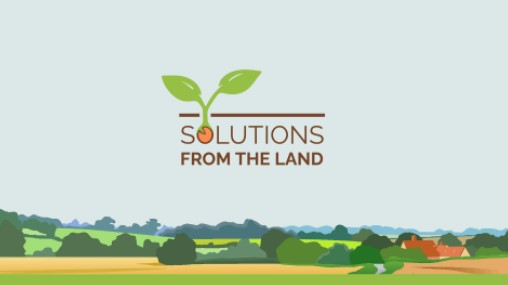
Agricultural News
Emissions Challenge Must Be Met with Political Will, Smart Production Practices
Thu, 12 May 2022 08:59:00 CDT
 Here is an opinion piece from Solutions from the Land on an EPA report analyzing inventory of U.S. Greenhouse Gas Emissions and Sinks:
Here is an opinion piece from Solutions from the Land on an EPA report analyzing inventory of U.S. Greenhouse Gas Emissions and Sinks:
A comprehensive analysis released by EPA last month shows domestic greenhouse gas (GHG) emissions and sinks across all sectors from 1990 through 2020. While there is fluctuation in the totals recorded in each of the 30 years analyzed, they generally trend up.
Over the period, agriculture's overall emissions were lowest in 1991, when 543 million metric tons (MMT) of carbon equivalent (CO2) emissions (which proportionately calculate methane, nitrous oxide and other GHG emissions on a par with carbon) were recorded. While there was some fluctuation over the years, GHG emissions from the ag sector generally trended up, hitting a high of 623 MMT C02e in 2019. Despite a Covid-related economic slowdown in 2020, agriculture's emissions still reached their eighth highest level that year, 594.7 MMT CO2(e).
In 2020, ag recorded 9.9 percent of total U.S. greenhouse gas emissions. Between 1990 and 2020, CO2 and methane emissions from agricultural activities increased by 8.1 percent and 16.9 percent, respectively, while N2O emissions from ag activities increased by 1.8 percent.
Estimates released by an international research firm shows that the 2020 respite in the annual rise of total U.S. GHGs recorded since 2005 was brief. Based on preliminary data, the Rhodium Group, which combines economic data and policy insight to analyze global trends, says progress in reducing U.S emissions was reversed in 2021, moving from 22.2 percent below 2005 levels in 2020 to only 17.4 percent the next year. The analysts say the shortfall puts the United States even further off track from achieving its 2030 climate targets.
The ramifications of the global failure to adequately restrain the growth of GHGs have been demonstrated by a variety of climate related catastrophes, including a decade-long, megadrought in the Western United States and Canada. The regions are experiencing the driest conditions producers there have seen in more than 100 years, endangering the valuable water supplies desperately needed by farmers and livestock producers, driving down agricultural productivity by reducing crop yields and stressing livestock. Overseas, severe drought in Afghanistan, coupled with questionable policy from the ruling Taliban, now means that some 10 million people more than a quarter of Afghanistan's population are near famine. Severe flooding in India in recent months has killed hundreds and exacerbated serious food insecurity in the nation.
Research shows that while both volatile rains and drought are part of natural climate variability, climate change is exacerbating these treacherous conditions, increasing their frequency and intensity. For example, scientists say that droughts that used to occur in dry regions once every 10 years could increase in numbers drastically four times per decade if efforts are not made to limit climate-changing conditions now.
Scientists say a reversal could still happen if governments immediately exercise the political will necessary to implement the policies that can slow the runaway train of climate change. But the clock is ticking loudly.
SfL is working to enhance the response to climate change that can come from farmers, ranchers and forestland owners. We promote Climate Smart Agriculture (CSA), which offers producers (1) practices that improve farm, ranch and forest productivity and profitability; (2) tools that can help growers adapt to the negative effects of climate change, such as diversifying crop rotation and stem off-farm flows of nutrients and pesticides, among others; and (3) steps that can mitigate the effects of climate change effects, including soil carbon sequestration practices or offsetting emissions though the production of low- to no-carbon transportation fuels and power sources.
In the context of the best CSA practices, policy makers must expand and accelerate steps that aim to reduce the future impacts of drought and build grower resilience. Enhancing wind erosion solutions, backing dust management techniques, launching campaigns to reduce water consumption and promote the restoration or reclamation of landscapes are all viable policy pursuits. Efforts could be made to encourage diverse landscape strategies that enhance production while allowing bees and other native pollinators to thrive. And after wildfires, policies and funding could accelerate restoration by planting trees and vegetation for water storage, as well as encourage farmers to plant drought-tolerant food crops.
The stress that a changing climate is putting on the agricultural and forestry landscapes across this country are growing rapidly. SfL stands ready to assist producers and policy makers in developing the practices, policies and partnerships that give our landscapes the best opportunity possible to meet production goals, while delivering pragmatic solutions to global and national sustainable development goals.
WebReadyTM Powered by WireReady® NSI
Top Agricultural News
More Headlines...



















